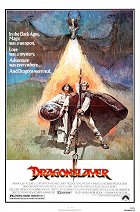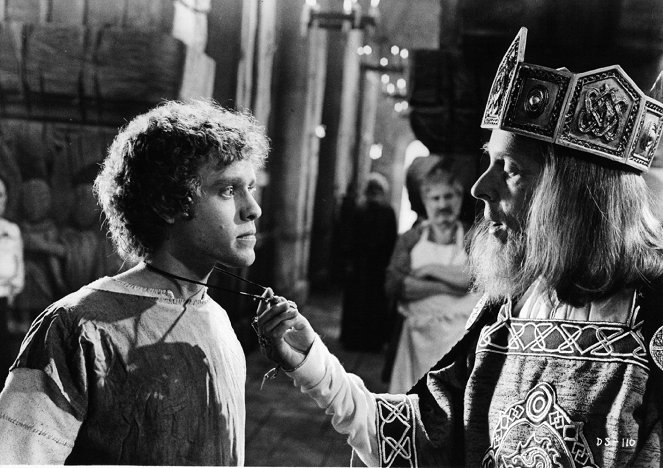Rendező:
Matthew RobbinsOperatőr:
Derek VanlintZeneszerző:
Alex NorthSzereplők:
Peter MacNicol, Caitlin Clarke, Ralph Richardson, John Hallam, Albert Salmi, Sydney Bromley, Ian McDiarmid, Yolande Palfrey, Alf Mangan, Peter Eyre (több)Tartalmak(1)
A King has made a pact with a dragon where he sacrifices virgins to it, and the dragon leaves his kingdom alone. (Paramount Pictures)
Recenziók (2)
Too bad about the eighties-style over-the-top ending where it’s all effects for effects’ sake and nothing else. Mainly the first half is an outstanding fantasy story which, unlike many of its brothers in the genre (and there were a lot of them), focused rather refreshingly on the dark side. If it had been considerably shorter and more restrained, Dragonslayer wouldn’t have remained overshadowed by its now unforgettable/unforgotten brothers.
()
Though Dragonslayer was unfairly overshadowed in its time by more spectacular and bombastic blockbusters, it is not only one of the essential titles of the Walt Disney Studios’ Dark Age, but also one of the most original fantasy movies of all time. The fantasy movies of the 1980s and, for that matter, of more recent times essentially used either Tolkienesque quest motifs or heroic Conan-style action narratives, but both forms simultaneously are built on exploring fantastical worlds with spectacular special effects and costumes. As opposed to that, the screenwriting duo of Hal Barwood and Matthew Robbins came up with the concept of magic and dragons set not in opulently spectacular mythical worlds, but in the Middle Ages with its caste system, bleakness and earthiness. On the other hand, they also wanted to avoid the stereotypical griminess and degradation associated with that era, or rather with its cinematic image. Under Robbins’s directorial guidance and thanks to generous production in a unique co-production of Walt Disney Studios and Paramount (the second project resulting from this collaboration was the similarly inconspicuously iconoclastic and creatively distinctive Popeye directed by Robert Altman), a realistic world was created that exudes extraordinary life in its intimacy and insularity. The film and its setting come across as inconspicuous, but thanks to the precision of the mise-en-scene and locations, it seems realistic without ever standing out and drawing attention only to itself. The most surprising thing, however, is the way Dragonslayer works with the motif of magic, which is constantly doubted, related to ordinary people and seized by representatives of the Church and the ruling authorities for the purposes of power. This storyline reaches a surprising climax in an unexpectedly bitter conclusion, which sets forth the fatal paradox of the dragon-slayer character, i.e. the slayer of creatures and of forces transcending the human world. Together with The Black Hole, The Watcher in the Woods, Tron, Something Wicked This Way Comes, and Return to Oz, Dragonslayer forms the backbone and absolute peak of Disney’s dark period and, like those other films, it is distinguished by inspired originality, unexpected complexity and stimulating ambiguity. Whereas in the first half of the 1980s other studios were churning out blockbusters and building up franchises, which dominate pop culture to this day, Disney was following a path of quality, originality, progressiveness, non-conformity and creative ambition. It’s no wonder that viewers rather flocked to the competition from Lucasfilm and Amblin, which were superficially more entertaining. Conversely, the mid-budget Disney films of the time wagered on civility (the coming-of-age drama Tex), commitment (Night Crossing, about an escape from East Germany) and meta-genre aspects (Condorman, Trenchcoat). The aforementioned backbone titles represent the unique phenomenon of anti-blockbusters that elicit amazement in equal measure through their audio-visual spectacle and themes, and furthermore prove to be far more mature and deep-thinking than those sophisticatedly crafted but essentially trashy blockbusters. However, history, or rather those who write it, decided to emphasise performance and ease of digestion instead of the aforementioned virtues, and thus that period is now considered to have been neglected and actively marginalised within the corporate narrative of the Disney brand (most of the aforementioned titles are not widely available) because it doesn’t fit in with the strenuously constructed image of a playful family-entertainment factory.
()
(kevesebbet)
(több)

